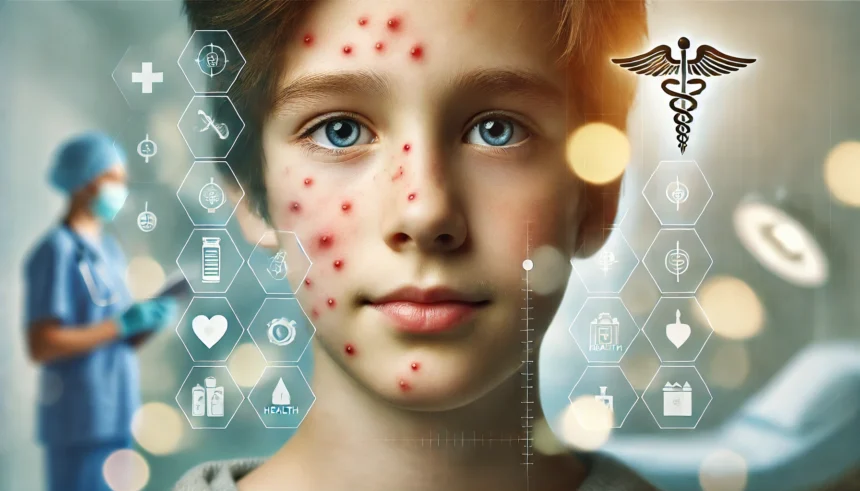Meth sores are a visible and painful consequence of chronic methamphetamine use. These skin lesions can cause physical discomfort and emotional distress, significantly impacting the lives of individuals struggling with addiction. Understanding methsores, their causes, and treatment options is crucial for recovery and overall well-being.
What Are Meth Sores?
Meth sores are open wounds or lesions that develop due to the effects of methamphetamine use. They often result from intense skin picking, poor hygiene, and a weakened immune system caused by the drug. These sores can become infected if left untreated, leading to severe health complications.
Symptoms and Appearance
Meth sores typically present as:
- Small red bumps that may resemble insect bites.
- Open wounds that scab over.
- Lesions commonly located on the face, arms, hands, and legs.
- Infected sores characterized by swelling, redness, and pus.
Identifying these symptoms early is essential to prevent further complications.
Causes of Meth Sores
Several factors contribute to the development of methsores:
- Formication Methamphetamine use can create the sensation of bugs crawling under the skin, known as formication. This hallucination leads to compulsive scratching and picking, causing skin damage.
- Skin Picking Meth amplifies obsessive behaviors, leading users to pick at minor blemishes or perceived irritations. This results in open wounds and scarring.
- Poor Hygiene Prolonged drug use often leads to neglect of personal hygiene, exacerbating minor skin issues and increasing the risk of infection.
- Drug Contaminants Impurities in meth can irritate the skin, triggering allergic reactions or worsening sores.
- Weakened Immune System Meth compromises the body’s ability to fight infections and heal wounds, prolonging the healing process.
Health Risks and Complications
Meth sores pose significant health risks, including:
- Infections: Open wounds are susceptible to bacterial infections like staph or abscesses.
- Permanent Scarring: Repeated skin damage can lead to visible scars.
- Mental Health Challenges: The physical appearance of sores can lower self-esteem and worsen anxiety or depression.
Treatment Options
Wound Care
- Gently clean sores with soap and water.
- Apply antibiotic ointments to prevent infections.
- Cover wounds with sterile bandages to promote healing.
Medical Intervention
Seek medical attention if:
- Sores show signs of infection.
- Wounds are not healing or worsening.
Addiction Treatment
- Detox Programs: Supervised detoxification can help individuals overcome physical dependency on meth.
- Counseling and Therapy: Behavioral therapy and support groups provide tools for managing addiction and underlying issues.
- Rehabilitation Centers: Comprehensive care programs address both the physical and emotional aspects of recovery.
Prevention
Preventing meth sores involves addressing both physical and behavioral factors:
- Maintain regular hygiene practices to reduce skin irritation and infection risks.
- Moisturize and nourish the skin to improve healing.
- Seek addiction treatment to prevent meth use and related behaviors.
- Develop healthy coping mechanisms for stress and triggers.
Seeking Help and Resources
Recovering from meth addiction and managing its effects, like methsores, requires professional help and support. Here are some resources:
- National Helplines: Call hotlines like SAMHSA for confidential support and referrals.
- Local Rehab Centers: Look for rehabilitation programs in your area.
- Support Groups: Groups like Narcotics Anonymous provide peer support and encouragement during recovery.
Conclusion
Meth sores are a painful reminder of the physical toll of methamphetamine addiction. While their appearance can be alarming, recovery is possible with proper care and support. By seeking treatment for both meth use and related health issues, individuals can begin their journey to healing and reclaiming their lives.
Frequently Asked Questions (FAQs)
What are meth sores?
Meth sores are painful skin lesions commonly caused by chronic methamphetamine use. They often result from repetitive picking, poor hygiene, and the drug’s effects on skin and blood flow.
How can I prevent meth sores?
Prevent methsores by maintaining proper hygiene, addressing triggers like skin picking, and seeking professional help to overcome methamphetamine addiction.
What’s the best treatment for meth sores?
Effective treatment includes cleaning wounds, applying antibiotic ointments, and consulting a medical professional for infections. Long-term prevention relies on stopping meth use and improving self-care habits.
Are meth sores contagious?
No, meth sores themselves aren’t contagious, but open sores can become infected, posing a risk if left untreated or handled without proper hygiene.
Do meth sores heal completely?
With proper care and stopping meth use, minor methsores can heal, though severe or infected sores may leave lasting scars.
Recommended Article:
Prude Glo: The Ultimate Guide to Understanding This Innovative Concept
Purdue Medical Assistant Program Cost: A Complete Guide
Jennifer Haynes NPI SC: Your Trusted Healthcare Provider in South Carolina






